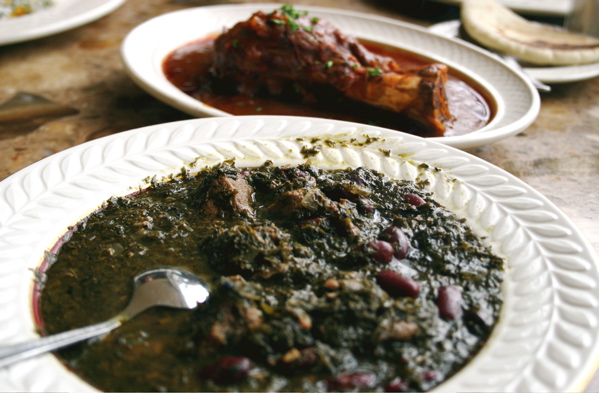
You toasted your television when the ball dropped in Times Square, you wished everyone “Gong hei fat choi” when Lunar New Year arrived, but are you ready for Norouz? Norouz, meaning “New Day”, begins on Friday, Mar. 20 this year (the spring equinox), which is the first day of the Persian calendar. According to Mohammad Zanjani, a Minnesotan who emigrated from Tehran as a teenager, Norouz ranks number one: “It’s the biggest holiday of the year, the first day of spring. Everything shuts down for two weeks. It’s a big party.”
The merriment lasts twelve days, which are packed with visiting and feasting. The festival winds up on the thirteenth day, “Sizdah Bedar,” Apr. 1, with a jovial family outing, often a picnic. It is customary to play pranks on your friends on Sizdah Bedar, similar to the kinds of jokes one plays on April Fool’s Day.
Traditions (and spellings) vary by region, but Persians typically prepare for Norouz by engaging in a massive spring cleaning. Zanjani says, in Tehran, that “Persian rugs were hanging everywhere, ” during the spring cleaning. Persians also buy new clothes for the holiday.
The first day of Norouz is reserved for making short visits to family and friends, particularly to elders, who ply their guests with sweets, nuts, dried fruits, and tea. “Elders also give cash, crisp new bills, to younger family members,” Zanjani says.
During the two weeks of Norouz, families set and display as beautiful as possible “Haft Sîn” table, which includes seven, and sometimes more, specific items that start with the letter “s” (Sîn), each with its own symbolism, from rebirth (a pot of sprouts), age and patience (vinegar), enlightenment (candles), cleanliness and honestly (a mirror), to life within life (a bowl of live goldfish), and fragrant flowers, including tuberose and hyacinth. “Fragrance is very important in Persian culture,” says Zanjani.
The Haft Sîn sprouts are thrown in the water on the thirteenth day, to symbolize getting rid of your bad luck. Zanjani says, Persian-Minnesotans often celebrate Norouz in their homes in small family groups and forgo the family picnic on April 1. “You could throw your sprouts in the water,” said Zanjani, chuckling, “but it would be pretty anti-climatic because it would just sit there. You would have to wait until it thawed. ”

Traditional New Year’s day meals include sabzi poli mahi, which is rice with parsley, coriander, chives, dill and fenugreek, served with fish.
If you would like to try a taste of Persian cuisine for Norouz, Caspian Bistro in Minneapolis serves authentic Persian fare. A representative choice would be dish #42, gormeh sabzi, described as “the most popular Khoresh in Persian cuisine, an aromatic stew made with sauteed fenugreek, chives, parsley, spinach, kidney beans, sun dried limes and cubed select tenderloin.” The dish is fragrant and earthy and tastes, well, fresh and green, like spring itself.
In their adjoining market, Caspian Bistro also sells many of the cookies, nuts, dates and teas that Persians would serve to their guests during Norouz.
In honor of Norouz, Shiraz Fire Roasted Cuisine in Minneapolis will be serving herbed rice with their fish and lamb shank dishes on Friday Mar. 20 and Saturday Mar. 21; live belly dancers will also perform on both nights from 7-10 pm.
The Persian Student Organization of Minnesota is hosting a Norouz celebration at the Radisson University Hotel on Mar. 28, 2009. There will be DJ-style music and a buffet style dinner. Tickets to the event may be purchased at Caspian Bistro or Shiraz.

If you wanted to try your own hand at Persian cooking, fresh herb kuku (kuku-ye sabzi), is a traditional dish. While not difficult, it does take time to wash and chop the herbs. “Persian food takes patience,” Zanjani says. Though it calls for five eggs, this recipe from A Taste of Persia, an Introduction to Persian Cooking by Najmieh K. Batmaglij, yields a dish that is less eggy than a quiche, and more like salad pie. Be forewarned that the four cups of chopped herbs that it calls for is a lot of herbs. Buy two bunches of everything when you’re at the grocery store. If you don’t have advieh, Persian spice, you can mix your own or make a visit to the grocery at Caspian Bistro.
Bon appetit!, or as the Persians would say, “Nush-e Jan!” (pronounced, “New-shay John”.)


Fascinating article. Thanks.